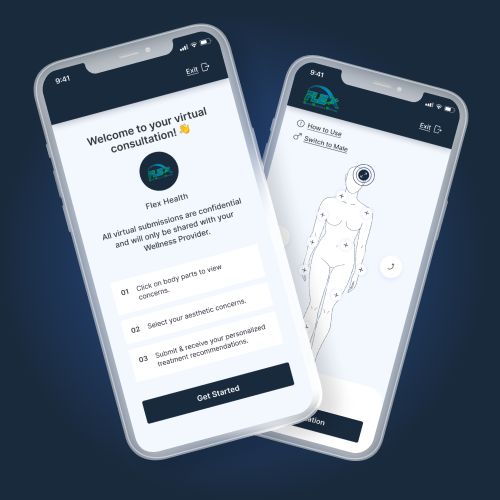Introduction
Golf is not just about swinging clubs and sinking balls—it’s a true blend of technique, precision, and strategy. Yet, amid the pursuit of lower scores and perfect swings, there’s a hidden challenge many golfers face: back injuries. These injuries not only impact your game but can sideline you from the sport you love. Fortunately, with the right approach, you can prevent these setbacks and continue enjoying the greens. This guide delves into effective strategies and exercises tailored to protect your back and boost your performance.
Understanding Golf Swing Mechanics
Why Technique Matters
In golf, proper swing mechanics are vital. A smooth swing involves more than just hitting the ball—it’s about coordination, balance, and minimizing stress on your back. Take a moment to think about professional golfers. Their swings appear effortless, yet each movement is carefully calculated to ensure both power and precision. This balance is crucial for preventing injuries. By focusing on your posture and swing path, you reduce unnecessary strain on your back, allowing for more consistent, injury-free performance.
Visual Comparison of Good vs. Bad Swing Posture
It’s essential to visualize what good and bad swing postures look like. Imagine a friend in a golf lesson: one moment their form is impeccable, the next, they’re twisting incorrectly. This inconsistency can lead to back pain. Consider recording your swing or practicing in front of a mirror to self-assess and adjust your form accordingly. Over time, these adjustments can significantly impact your game’s quality and keep you on the course without pain.
Exploring Proper Swing Techniques
Good swing techniques involve more than just aiming for the green. It’s about synchronizing your body movements for maximum effect while minimizing stress on specific areas, particularly the back. Consider lessons or tutorials that focus on biomechanics. Such guidance helps you understand the underlying mechanics of a proper swing, which ultimately leads to fewer injuries and better overall performance.
The Role of Core Stability for Golf
Core Strengthening Exercises
Your core is the powerhouse of your swing—it propels your body, supporting the fluidity and force needed in a good stroke. When you strengthen your core, you indirectly support and stabilize your spine, reducing stress not just on your back but throughout your entire body. Simple yet effective exercises, such as planks and core twists, are perfect for enhancing this muscle group.
Implementing Core Exercises in Daily Routines
Fitting core exercises into your daily routine is easier than you might think. Spend just five to ten minutes each day focusing on these movements. They don’t require extensive equipment or time, making them accessible even on your busiest days. The benefits are immense, translating into more power in your drives and stability during play.
Benefits of a Strong Core in Golf
A strong core doesn’t just improve your golf swing—it boosts your overall athletic ability, balance, and posture, all essential in maintaining a healthy spine. Investing time in core exercises lowers injury risks and can significantly affect your agility and endurance on the course.
Flexibility in Golf Performance
Importance of Stretching Before Golfing
Engaging in a dynamic stretching routine before hitting the course prepares your body for the physical demands of golf. This preparation is vital in preventing stiffness and reducing injury risks. Stretching increases your range of motion and helps ensure your muscles are ready to respond effectively during play.
Dynamic Stretches to Incorporate on the Course
Dynamic stretches, such as torso twists and leg swings, can be done right on the course. These exercises not only warm up your muscles but also improve flexibility and balance. A flexible body means a more fluid swing, reducing the prospect of injuries.
Enhancing Flexibility and Reducing Tension
By incorporating flexibility exercises regularly, you actively reduce muscle tension and the likelihood of strain during your swings. Consider yoga or Pilates, which are excellent for both flexibility and core strengthening. These activities complement your golf training, offering comprehensive health benefits that extend beyond the course.
Posture Correction Techniques
Achieving Correct Posture While Playing
Correct posture in golf is fundamental—it provides the foundation for every successful swing. Ensure your feet are shoulder-width apart with your spine straight yet relaxed. Visualize your posture as the framework of a house; without a solid foundation, structural issues are inevitable.
How to Practice Your Setup
Practice finding your natural stance with simple drills. Use alignment sticks or a mirror to help keep your posture consistent. A solid routine ensures your posture remains consistent and minimizes the risk of slouching or improper alignment during your swings.
Tips from Golf Professionals
Professionals often advise focusing on the spine angle. A neutral spine angle helps in executing a more controlled and effective swing. Pay heed to the small corrections recommended by seasoned golfers—these tweaks might seem minor, but they can drastically reduce back strain over time.
Choosing Injury-Preventive Golf Equipment
How Equipment Affects Your Game and Health
Choosing the right equipment is crucial for performance and injury prevention. Ergonomically designed clubs can mitigate the risk of strain, allowing you to maintain a natural swing motion. It’s like wearing the right pair of shoes for a marathon—they should support rather than hinder your movement.
Benefits of Ergonomic Clubs
Ergonomic clubs are tailored to fit your play style and body structure. They promote a better swing path and alleviate stress on your wrists and back, thus helping to prevent injuries. Consulting with a golf pro can provide insights into selecting gear that best suits your individual needs.
Consultation and Review of Your Gear
Regularly reviewing your gear, especially if you’ve changed your swing or body composition, is vital. A club fitting session can be an eye-opener, often resulting in immediate improvements in both comfort and control.
Conclusion
Embracing these tips and techniques will ensure you play your best game while keeping your back healthy. Remember, golf is as much about maintaining your health as it is about skill. By preventing injuries, you’re investing in more enjoyable and longer golfing experiences.
Actionable Takeaways:
- Incorporate swing practice that focuses on maintaining balance and reducing strain.
- Strengthen your core daily to enhance stability and prevent injuries.
- Implement dynamic stretching exercises before each game to prepare your body.
- Regularly evaluate your posture and adjust for an optimal spine angle.
- Choose equipment that complements your physical capabilities and promotes a natural swing motion.
Golfer’s Guide on Core Exercises for Back Health
Golfer’s Gear Selection Focused on Back Health
Social Media Promotional Snippets:
Facebook: “🎯 Ready to perfect your golf game while keeping back injuries at bay? Discover top techniques to enhance performance and maintain health. Dive in → [link] #GolfLife #InjuryPrevention #FlexHealth”
Instagram: “Want to swing without the sting? 🏌️♂️ Check out these game-changing tips to protect your back and up your golf game! Link in bio. #GolfTips #HealthyBack #FlexHealth”
X (formerly Twitter): “Looking to ace your golf game without back strain? Explore essential back-saving strategies. 🏌️♀️🛡️ #GolfHealth #InjuryPrevention #FlexHealth”




